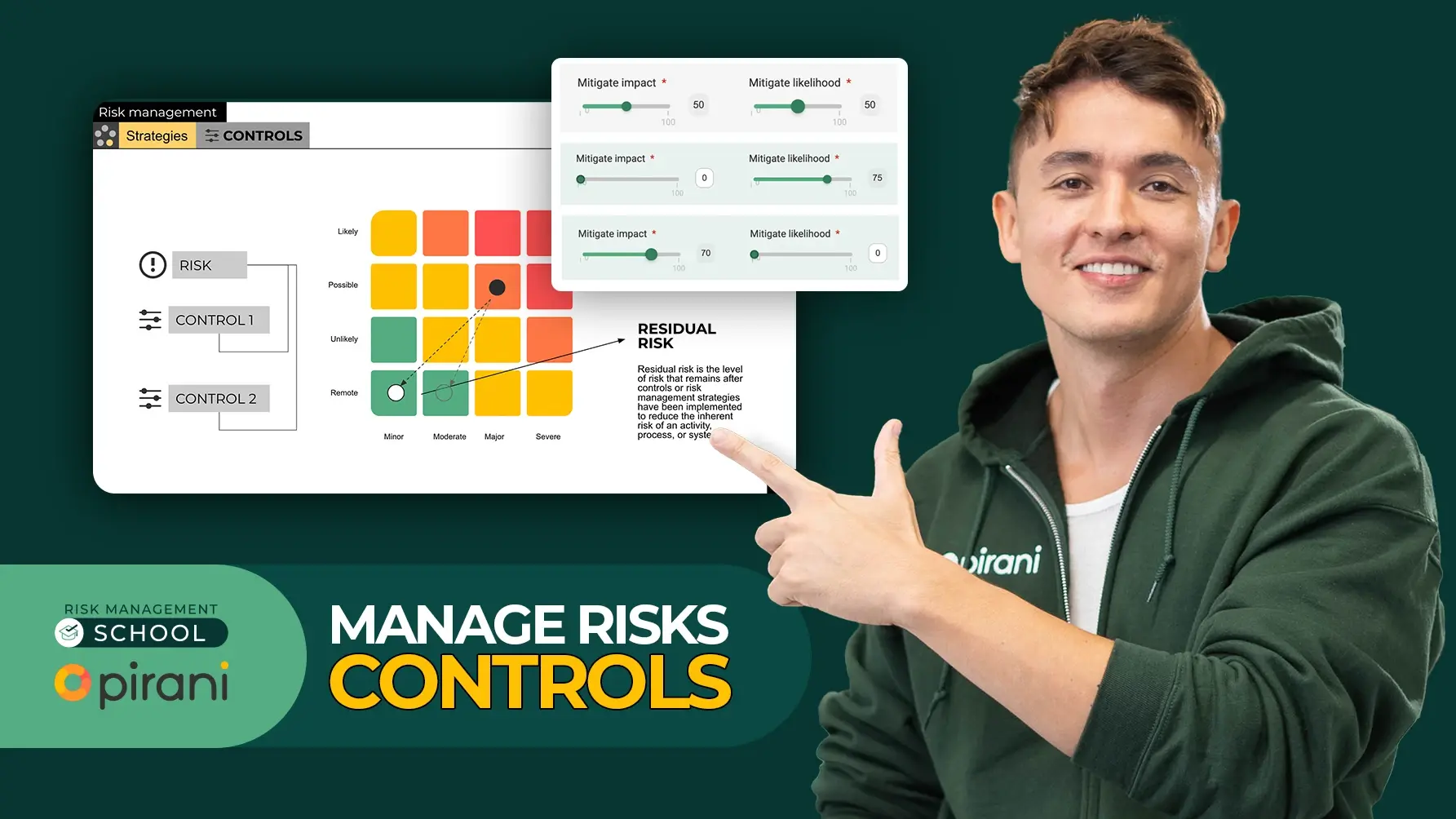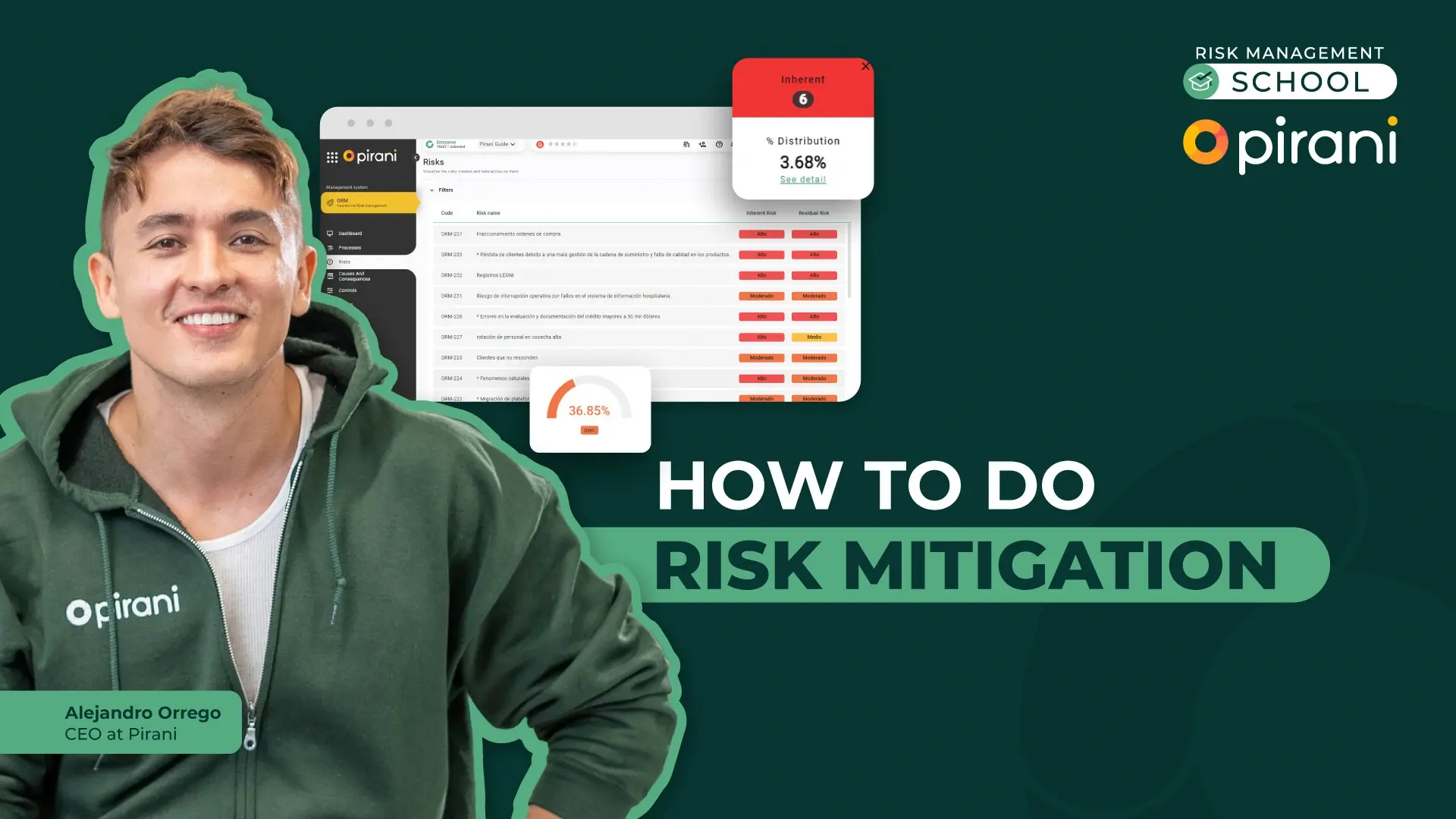[class #1] How to identify your processes correctly
by Risk Management School on 28 de April de 2023
🎓 Risk Management School
In this session, Alejandro Orrego, CEO of Pirani, teaches us the concept of process, its components, classification, characteristics, key tips to create processes, and how to map your processes in Pirani.
Context
A process can be defined as a series of steps or actions that are taken to achieve a particular result or outcome. Processes can be found in many different contexts, such as manufacturing, business operations, software development, and project management.
A process typically involves inputs, such as materials, information, or resources, which are transformed or acted upon in some way to produce outputs or results. The steps in a process are often designed to be sequential and interdependent, with each step building on the one before it and contributing to the final outcome.
Process components
- Input: Materials, information, or resources required to initiate the process.
- Activities: Tasks to be performed in an orderly manner.
- Output: Tangible or measurable products, services, or results that are produced by a process or activity.
Process categories / hierarchy
- Macro-process: A macro-process is a high-level process that encompasses multiple sub-processes and activities. It is typically a complex process that involves many different steps and functions, and may span multiple departments or functions within an organization.
- Process: A process is a series of interrelated steps or activities that are designed to achieve a specific outcome. A process can be part of a macro-process, or it can be a standalone process that operates independently.
- Sub-process: A sub-process is a smaller, more detailed process that is part of a larger process. Sub-processes typically represent a specific step or subset of activities within a larger process, and are often designed to achieve a specific intermediate outcome that contributes to the overall goal of the macro-process.
Process types / classification
- Mission: Mission processes, also known as core processes, are the primary processes that are directly related to an organization's mission or purpose.
- Strategic: Strategic processes are the processes that are involved in the planning and execution of an organization's long-term goals and objectives.
- Support: Support processes, also known as enabling processes, are the processes that provide support and resources to the mission and strategic processes of an organization.
Criticality Assessment
MTPD: The Maximum Tolerable Period of Disruption MTPD or Maximum Acceptable Outage (MAO) defines the time-period that could be endured as a result of disruption before being deemed unacceptable.
Qualifications for critical activities: Are used to determine which activities are truly critical, and to prioritize them accordingly.
A good process has
- Clearly defined objectives
A good process should have a clear and specific objective that is aligned with the overall goals and objectives of the organization.
- Well-defined steps
A good process should have well-defined steps that are easy to understand and follow. This helps to ensure that the process is executed consistently and effectively.
- Clearly defined roles and responsibilities
A good process should clearly define the roles and responsibilities of everyone involved in the process. This helps to avoid confusion and ensures that everyone understands their role in the process.
- Effective communication
A good process should have effective communication channels in place. This helps to ensure that everyone involved in the process is informed and up-to-date on the progress and any changes to the process.
- Measurable outcomes
A good process should have measurable outcomes that can be used to evaluate its effectiveness. This helps to identify areas for improvement and ensure that the process is achieving its intended goals.
- Continuous improvement
A good process should be continuously reviewed and improved upon over time. This helps to ensure that the process remains effective and efficient, and is able to adapt to changes in the environment.
Play to learn more! →
You May Also Like
These Related Stories

[class #3] How to create effective risk management controls

Continuous Improvement through Action Plans and Assessments


No Comments Yet
Let us know what you think